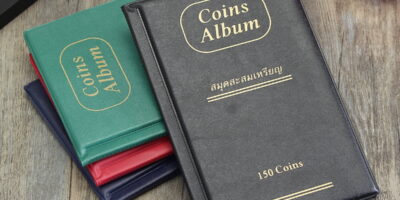The Silver Dime Years: A Closer Look
Collectors and historians often discuss the silver dime years with great interest. This term generally refers to the period when dimes in the United States were minted using a high percentage of silver. Understanding this era provides insight into the history of American coinage and its evolution.
The Composition and Minting of Silver Dimes
Dimes minted prior to 1965 were composed of 90% silver and 10% copper. These were the years when the intrinsic value of the metal was a significant part of the coin’s worth. The most well-known series from this era include the Barber Dime (1892-1916), Mercury Dime (1916-1945), and Roosevelt Dime (1946-1964).
Barber Dime (1892-1916)
Designed by Charles E. Barber, the Barber Dime stands out for its classical appearance. The obverse featured Liberty wearing a Phrygian cap. The reverse showed a wreath of corn, wheat, oak, and maple leaves. Collectors often seek the 1894-S Barber Dime due to its rarity. Only 24 were minted, and fewer than ten are known to exist today.
Mercury Dime (1916-1945)
The Mercury Dime, designed by Adolph A. Weinman, is celebrated for its artistic design. Liberty is depicted with a winged cap, symbolizing freedom of thought. The reverse features a fasces, representing strength and unity, alongside an olive branch for peace. The 1916-D Mercury Dime is especially rare, making it a prized artifact for enthusiasts.
Roosevelt Dime (1946-1964)
Introduced in 1946, the Roosevelt Dime commemorated President Franklin D. Roosevelt. The design by John R. Sinnock shows a portrait of Roosevelt on the obverse. The reverse includes a torch between olive and oak branches, symbolizing liberty, peace, and strength. These silver dimes were the last in regular circulation in the U.S. containing silver.
The Transition from Silver Dimes
The Coinage Act of 1965 marked a significant shift in U.S. coins. It removed silver from circulating dimes and quarters due to rising silver prices and coin shortages. New dimes were clad, made with a copper core and a nickel exterior. This variation in metal composition marked an end to the traditional silver era.
Why Silver Dimes Matter to Collectors
- Intrinsic Value: Silver dimes held real metal value. Changes in silver prices can affect their value even today.
- Historical Significance: These coins reflect the economic and social conditions of their time.
- Rarity and Condition: Some dimes are rare or in pristine condition, making them more valuable.
Determining the Value of Silver Dimes
Several factors influence a silver dime’s value:
- Mint Year and Location: Dimes are marked with a letter indicating the mint location. For example, ‘D’ for Denver or ‘S’ for San Francisco.
- Condition: Grading from Poor (P-1) to Mint State (MS-70) impacts value. Highly graded coins are more sought after.
- Rarity: Some years or mint marks are rarer than others, increasing interest.
- Silver Content: Fluctuating silver prices can drive changes in coin value.
Collecting and Investing in Silver Dimes
Silver dimes attract not just hobbyists but also investors. Their silver content offers tangible value alongside historical significance. Investing in these coins requires knowledge of market trends, historical insights, and the nuances of numismatics. Some investors prefer holding onto silver dimes during economic uncertainty. These coins provide a safeguard against inflation or currency devaluation.
Identifying Authentic Silver Dimes
Counterfeits exist in the numismatic world, so authenticity checks are crucial. Reputable dealers provide certification. Coins are often graded and encapsulated, giving buyers peace of mind regarding authenticity and condition. Weighing and measuring a dime can help verify its legitimacy, ensuring it aligns with standard specifications. Additionally, examining the coin’s edges and details can reveal inconsistencies.
Caring for and Storing Silver Dimes
Proper care preserves the coin’s condition and value. Store them in a climate-controlled environment to prevent tarnishing. Use coin holders or albums to keep them safe from scratches or other damage. Avoid handling them directly with bare hands, as oils and moisture can impact their appearance.
Resources for Aspiring Collectors
- Books: There are many books on coin collecting that cover historical data and valuation guides.
- Online Forums and Communities: Numismatic forums are full of experienced collectors sharing insights.
- Expositions and Coin Shows: These events offer a chance to learn and connect with other numismatists.
- Professional Grading Services: Companies such as PCGS and NGC provide reliable grading and certification.
Interesting Anecdotes
One of the most intriguing tales involves the 1944 Mercury Dimes. A rumor once claimed they contained traces of the Los Alamos Lab’s silver due to an accidental minting with metal used in the Manhattan Project. Though exciting, this story lacks verification. Yet, it highlights the mysterious allure and history tied to these coins.
The Global Perspective
Other countries have navigated similar shifts in coin composition. Many nations removed or reduced silver in coins during the 20th century. This global trend reflects broader economic forces such as resource scarcity and fluctuating metal markets. The U.S. alone isn’t unique in this transition, offering a broad area for comparative studies in numismatics.
Technological Advances in Coinage
Modern minting technology allows for coins with detailed designs and security features. Though current dimes no longer contain silver, advancements ensure durability and prevent counterfeiting. Technologies like laser etching and intricate engraving maintain the artistic quality that coin enthusiasts appreciate.
